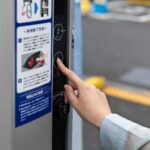A company can have all the tools in the world. But if the people inside it stop growing, the business stops moving forward. That’s the truth. What really keeps a company sharp is how often it learns. And not just the employees. Everyone. From the intern to the CEO.
You can’t just tell people to learn once a year and expect magic. Learning needs to happen all the time. It needs to feel normal, not forced. That’s what building a culture of learning is all about.
Why Ongoing Learning Matters
Training used to be something you did during your first week. Maybe you’d get one or two sessions later in the year. But now, that’s not enough. Things move too fast. Roles change. Tools change. Even customer needs change.
Implementing efficient corporate learning means people pick up skills while they work. It fits into daily routines. No one gets pulled away from their tasks for hours. Instead, they grow while staying active in their roles.
That kind of setup makes employees better at what they do. It also helps teams work together with less confusion. Everyone becomes more adaptable. That’s how companies stay strong.
Make Learning Part of the Daily Flow
The key is to make learning feel natural. Not like homework. Not like a long lecture. Instead, it should slide right into the workday.
You can do this in small ways. A quick discussion at the start of a meeting. A 5-minute video shared on the group chat. Even letting coworkers teach each other small tricks that save time.
When people see learning as something easy and helpful, they won’t avoid it. They’ll start looking for it. That’s when habits form. And habits are what keep a learning culture alive.
Leaders Should Go First
People notice what leaders do. If the manager avoids learning new things, others will too. But if leaders show they’re open to learning, that energy spreads.
Good leaders ask questions. They listen. They admit when they’re stuck and show how they try to improve. That makes learning feel safe for everyone else.
It doesn’t mean bosses need to be perfect. They just need to stay curious. That attitude sends a message: It’s okay not to know everything. What matters is trying to grow.
Learning Has to Be Simple
Let’s be honest—most people don’t want to read a 30-page guide. They want fast answers. Quick lessons. Something that actually helps with the task in front of them.
That’s why learning should be simple. A short checklist. A step-by-step video. Even a quick voice note can help.
People also learn in different ways. Some like watching. Some like doing. Others just need a quiet moment to read. When learning comes in different forms, more people benefit from it.
A Safe Space Makes All the Difference
If people feel embarrassed for asking questions, they’ll stay quiet. That’s a problem. Silence stops progress.
To build a true learning culture, the workplace has to feel safe. Not just physically, but mentally too. People should feel okay admitting they don’t know something.
Encourage honest conversations. Let people make small mistakes without fear. The more support there is, the more likely people will take learning seriously. And they won’t just learn—they’ll apply what they learn.
Recognition Helps Learning Stick
When someone learns a new skill and uses it, don’t stay silent. A simple “Nice job” can do a lot. It shows people their effort is seen.
You can also use feedback to support learning. It doesn’t have to be harsh. Just be honest. Point out what went well and where they can grow. Keep it kind.
Recognition and feedback both show that learning isn’t just expected. It’s valued. That kind of positive loop keeps people engaged.
Match Learning with Company Goals
Learning works best when it’s tied to something real. Something the business is aiming for.
Say the company wants to improve client satisfaction. Then teach employees how to communicate better or solve issues faster. If the focus is on digital growth, teach digital tools.
People want to know why they’re learning something. When they see how it connects to the bigger picture, they take it more seriously. And the business sees results much faster.
Let the Culture Build Over Time
You won’t build this culture in a week. And that’s okay. It grows over time. Through small actions. Through habits. Through everyday effort.
It might start with one manager encouraging the team to learn. Or one department trying something new. But those small moments spread. And little by little, they turn into something big.
Once learning becomes part of the work culture, it sticks. It shapes how people work. How they think. How they talk to each other. And that changes everything.
Final Thoughts
A culture of corporate learning doesn’t just help individuals. It lifts the whole company. It keeps people ready for change. It helps teams work better. And it makes businesses stronger from the inside out.
You don’t need fancy programs to start. You just need the right mindset. Make learning feel easy. Keep it safe. Give feedback. Celebrate wins.
Do that every day, and you’ll build more than skills. You’ll build a company that keeps growing—no matter what comes next.

















